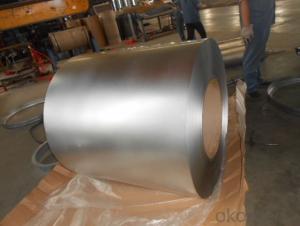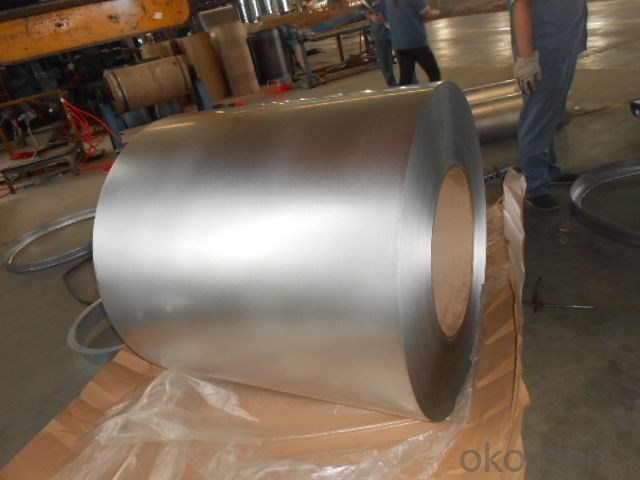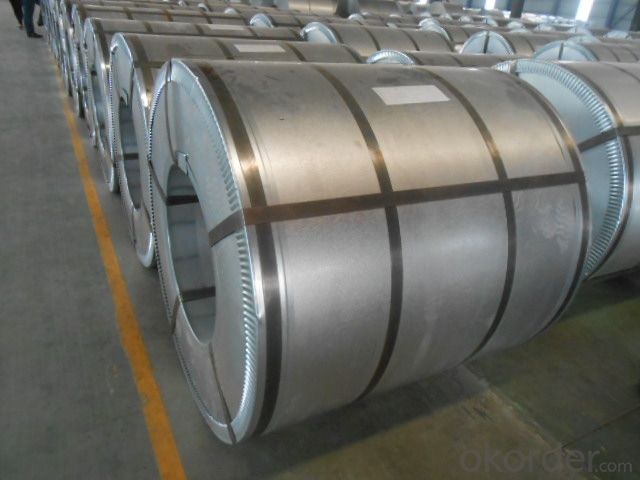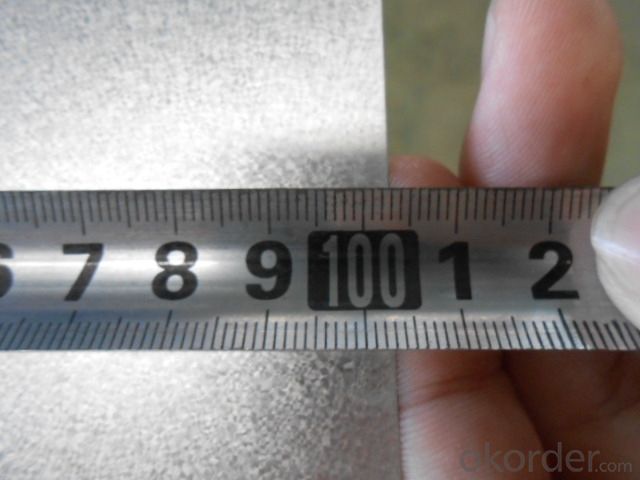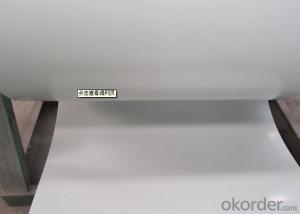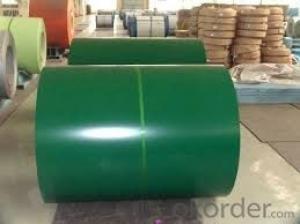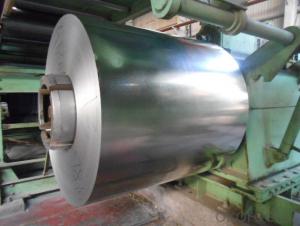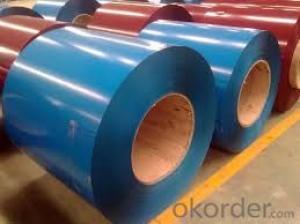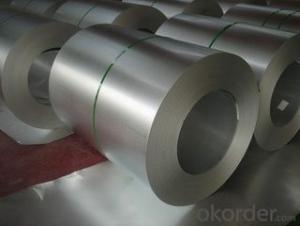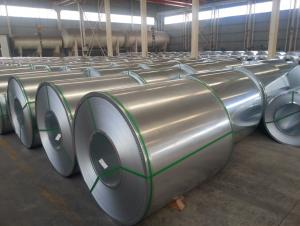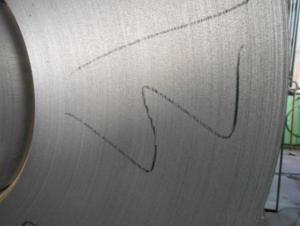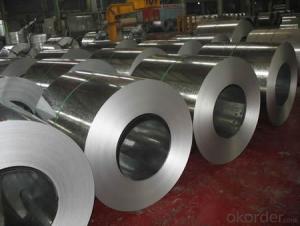Hot Dipped Aluzinc or Galvalum Steel Coils
- Loading Port:
- Shanghai
- Payment Terms:
- TT OR LC
- Min Order Qty:
- 50 m.t.
- Supply Capability:
- 50000 m.t./month
OKorder Service Pledge
OKorder Financial Service
You Might Also Like
Product Description:
General Information
Thickness: 0.25mm-4.0mm |
Width: 900mm-1250mm |
Alu-zinc Coating: 50-150g/m2 |
Internal Diameter: 508mm/610mm |
Coil Weight: 4-8MT |
Quality: commercial and structural quality |
Surface Treatment: oiled & dry, chromated, anti-finger, non-skin pass/ skin pass |
Standard: JIS G 3321, ASTM A792M, EN 10215 |
Steel Grade: SGCC, SGCD, CS,FS,SS,DX51D+Z DX52D+Z; S200GD, S220GD, S280GD, S350GD |
Package: full wrapped with anti-damped paper inside, iron sheet wrapped outside, and bundled by iron strips |
Technical Data
Chemical Composition | C | Si | Mn | P | S |
0.04-0.06% | 0.01-0.03% | 0.18-0.22% | 0.014-0.016% | 0.006%-0.009% |
Technical Data | |
Yield Strength | (Mpa) 280-320 |
Tensile Strength | (Mpa) 340-390 |
Elongation | 20%-30% |
Out-of-square | not exceed 1% Flatness |
Bow | 15mmmax |
Edge Wave | 9mmmax |
Centre Buckle | 8mmmax |
Bending At 180 Degree | no crack, peeling and fraction |
Application
Aluzinc Steel can be widely used in transportation, light industry, civil usage and farming. It is also the perfect building material in construction for making roofing tile, steel profiles for wall partition, T-bar, studs, fireproof door, air conditioning duct and home appliance.
- Q: What are the common applications of hot-dip galvanized steel coils?
- Hot-dip galvanized steel coils have a wide range of common applications, including roofing and construction materials, automotive parts, electrical appliances, and agricultural equipment. The galvanization process provides excellent corrosion resistance, making these coils ideal for outdoor structures and applications exposed to harsh environments.
- Q: What are the different coil packaging materials used for steel coils?
- Different materials are used for packaging steel coils, each with its own unique properties and benefits. Some of the most commonly used materials are as follows: 1. Stretch film is a flexible material that tightly wraps around the coil, providing protection against dust, moisture, and scratches. 2. Steel strapping is a strong and durable option that ensures the coils remain tightly bound during transportation or storage, thanks to its high tensile strength and resistance to breakage. 3. Plastic strapping, on the other hand, is a lightweight and cost-effective alternative to steel strapping. It offers good shock absorption and is resistant to rust and corrosion, making it suitable for smaller or lighter steel coils. 4. Paperboard is an environmentally friendly packaging material that provides a protective layer against dust and minor impacts. It also allows for slight breathability to prevent moisture buildup. 5. Wooden crates are commonly used for large or heavy steel coils, as they offer sturdy support and protection during handling, transportation, or storage. 6. Corrugated cardboard is a versatile and lightweight material suitable for smaller steel coils. It provides cushioning and protection against minor impacts, and it is easily recyclable. The choice of packaging material for steel coils depends on factors such as coil size and weight, transportation requirements, and the desired level of protection. Each material has its own advantages and should be selected based on the specific needs of the steel coil packaging.
- Q: I was cutting a sheet of steel with an angle grinder when suddenly the rate at which the blade was cutting slowed way down. I tried a few different things, and turned off the tool and looked at the blade. It didn't look damaged, but it definitely was not cutting as quickly. I thought either I had hit a harder section of steel (is that possible? It looked pretty uniform) or the blade had lost it's abrasive quality or something. Also, before this happened I had accidentally cut into the wooden sawhorse that was holding up the steel sheet, but I've done that before with no problem. After a short while the problem fixed itself and the rate of cutting went back to a fast normal. Anyone know why this happened?
- Sounds like the abrasive surface got blinded, coated with something that prevented the abrasive particles from touching the steel. It is possible to have vastly different hardnesses in a single piece of steel. Case hardening, carburizing, induction hardening, heat affected zone from welding, differences in work hardening, and presence of inclusions are some of the things that can create hardness variation within a single piece. But... sounds like you are working with a sheet which is unlikely to have any of these conditions. So... it was probably the grinding disk
- Q: I work with stainless steel a lot and I know it's rust resistant but it's definitly not STAIN resistant. You might be able to remove some stains easier from it than you can from some other surfaces but when it does stain, its hard as heck to clean it. It takes forever to scrub stains off my stainless steel pans so maybe it should just be called rustless steel?
- It is called stainless because it is much more highly resistant to rust and corrosion. It is stainless in camparison to other steels, such as carbon steel.
- Q: How are steel coils processed for different finishes?
- Various methods can be utilized to achieve different finishes on steel coils. One of the most commonly used is known as coil coating. This process involves several steps, including cleaning, priming, coating, and curing the steel coil to obtain the desired finish. To begin, any contaminants on the surface of the coil are removed, followed by the application of a primer to improve adhesion. Finally, a specific paint or coating material is applied to the coil. The coated coil is then subjected to high temperatures to ensure proper adhesion and durability. Another method for processing steel coils is galvanization. This technique involves coating the steel coil with a layer of zinc to protect it from corrosion. Galvanization can be achieved through hot-dip galvanization, where the coil is immersed in molten zinc, or electro-galvanization, where a thin layer of zinc is electroplated onto the coil. The resulting galvanized finish offers exceptional corrosion resistance and can be further processed for various aesthetic finishes. Furthermore, different surface treatments can be employed to achieve desired finishes on steel coils. These treatments may include pickling, which utilizes an acid solution to eliminate scale and impurities from the coil, or mechanical treatments like brushing or grinding to create a specific texture. Following these surface treatments, a protective coating or paint can be applied to enhance the appearance and durability of the coil. In conclusion, achieving various finishes on steel coils necessitates a combination of cleaning, coating, curing, and surface treatments. The selection of specific methods depends on the desired finish and the intended application of the steel coil.
- Q: What are the common packaging methods for steel coils?
- The common packaging methods for steel coils often involve using steel strapping or plastic banding to secure the coils, followed by either placing them on wooden pallets or loading them into steel crates for transportation and storage. Additionally, protective materials such as cardboard or stretch film may be used to prevent damage and ensure the integrity of the coils during shipping.
- Q: I am buying a knife for my future husband for his wedding gift and I was wondering what is better carbon steel or stainless steel?
- The better grade of stainless is the top choice, but it can be hard to find, and expensive. - Surgical scalpels are made of it. (Common '420' stainless will not hold an edge as well as high carbon steel.)
- Q: What are the common thicknesses available for steel coils?
- The specific requirements and applications determine the available common thicknesses for steel coils. However, various industries commonly produce and use certain standard thicknesses. Typically, steel coils can range in thickness from 0.005 inches to 0.5 inches or more, depending on the type of steel and its intended use. For instance, in automotive manufacturing, where steel coils are utilized for body panels and structural components, the thicknesses commonly range from 0.5 mm (0.020 inches) to 3 mm (0.118 inches). In the construction industry, steel coils are employed for roofing, siding, and structural framing. The common thicknesses can vary from 0.014 inches to 0.062 inches, depending on the specific application and structural requirements. Similarly, appliances manufacturing, such as refrigerators, washing machines, or HVAC systems, frequently employ steel coils with thicknesses ranging from 0.018 inches to 0.035 inches. It is important to note that these are only a few examples of common thicknesses, and variations can occur based on the specific requirements of different industries and applications. Custom thicknesses can also be produced upon request to meet unique needs in various sectors.
- Q: I have samurai sword that is a replica of the kill bill sword. It says on the blade stainless steel, what can i use to shine and protect blade. It had and still does a wax.like coating on the blade sine i received it. Thx for ur help
- i like how you asked this in the Card Games section.
- Q: Where are the coils and the steel plates used? Where did the steel plate come from?
- Steel plate is divided into many kinds of PU, low alloy, boiler plate, vessel plate, high strength plate, etc..
Send your message to us
Hot Dipped Aluzinc or Galvalum Steel Coils
- Loading Port:
- Shanghai
- Payment Terms:
- TT OR LC
- Min Order Qty:
- 50 m.t.
- Supply Capability:
- 50000 m.t./month
OKorder Service Pledge
OKorder Financial Service
Similar products
Hot products
Hot Searches
Related keywords
